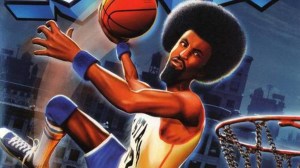Mamoru Hosoda is one of the most prominent anime film directors creating today, and all eyes have been on his latest work, Mirai, which has finally opened for a limited time in the United States.
Videos by ComicBook.com
ComicBook.com had the chance to speak with Hosoda about his newest work and pick his brain. Hosoda was able to talk the inspiration behind focusing on a 4-year-old protagonist, the challenges arising over such a decision, the relatability of its family dynamic, time travel, and even Dragon Ball Super: Broly for good measure.
For those interested, GKIDS and Fathom Events are currently screening the film in 700 theaters across the United States on December 5th with English subtitles and December 8th for the English dub.
Mirai follows a small family living in a small town. 4-year-old Kun-chan is so spoiled, he thinks his new baby sister Mirai stole all of his parents’ attention from him. Overwhelmed by new things he’s experiencing for the first time in his short life, he stumbles on a magical garden which allows him to meet the older version of his little sister.
Mamoru Hosoda both writes and directs the film while Hiroyuki Aoyama and Ayako Hata, who had worked with Hosoda on The Girl Who Leapt Through Time, Summer Wars, Wolf Children, and The Boy and The Beast, return to work on the film as animation directors. Yuichiro Saito returns to produce, while Yohei Takamatsu and Takashi Omori also return as art directors.
Read on for the full interview with writer and director of Mirai, Mamoru Hosoda.
Kun Is a Very Young Child
ComicBook.com: Your films have featured children at the center before, but Kun is the youngest at four years old. Was there a particular inspiration behind choosing such a young age this time?
Mamoru Hosoda: This movie is based on what my son had experienced. When my son was three years old, we brought home our baby girl. When we brought the baby home, my son had a mysterious expression on his face like, “What’s going on?” My wife and I told him, “This is your little sister,” but he didn’t quite understand what a little sister was. So I was interested in how my son accepted his little sister, and how he understood that he was going to be an older brother now.
Was It Hard Writing For a Four Year Old?

Were there any challenges writing complicated scenes with such a young child at the center, or did you find enough inspiration in your son?
When you think of, “Oh, I’m going to depict the life of a four year old,” well, they’ve only lived four years [laughs]. So that’s not a lot of years when you think about it. When we welcomed the baby, we were so busy taking care of her that my son reacted with “Oh my god, this baby took away my parents’ love.” For a four year old, that’s a very huge emotion to feel, and it was probably his first time feeling that way. So we used that for the movie.
Kun’s Parents
So you saw yourself more as Kun’s parents? Because they’re very relatable.
Actually, I relate to Kun more, because he’s the main character. The fact that he thought someone took away his love is very realistic to anybody, not just children. But with regards to the parents, I really wanted to depict how true parents are. Parents aren’t just parents, right? They don’t just raise children; they have their own lives and work. So I wanted to showcase the struggles of being pulled apart by all these different responsibilities.
Time Travel

You’ve featured time travel in films before, so was there any particular reason behind returning to time travel for this film?
I wanted to show how parents were once kids too. In this small family, their parents were once kids too, and they had parents who were also parents as well. Within this small nuclear family of four, there’s a long history of their ancestors that’s all connected. I wanted to show how, through the time leaps, each of those lifestyles are still connected.
Any Lessons Learned from Previous Works?
Mirai seems like it’s a film that could only be made now, a natural progression of your other works. Did you take any lessons from those previous works to user for this film?
So my previous film, The Boy and the Beast, was about him not knowing how to be a father, and through that I did acquire some hints as to how to be a father [laughs]. So now that I’ve explored how to be a father, a little [laughs], I wanted to explore the sibling relationship. How they would come to understand one another. To explore how Kun would come to understand that in order to get his parents’ love again, he needs to give love to Mirai. This doesn’t really answer your question [laughs], but it played a major factor in the process.
What Should Fans Take Away from Mirai?

What do you want fans to take away from watching Mirai?
Because the protagonist is four years old, I want audiences to remember when they were the same age, and how their parents must have felt when they were four. Just thinking about how wide a lifespan is, and the meaning of what life is really about. It seems like this movie is just about everyday instances, but I hope audiences seek out a deeper meaning from it like the meaning of life.
Remember Broly?
You once contributed to work on the Dragon Ball Z Broly film way back in the day, so I was wondering if you had any opinions about the fact that the character’s coming back in a new way.
[laughs] I first had drawn on Broly nearly 30 years ago, and to think he’s still around and still living, yeah, I’m rooting for him.








